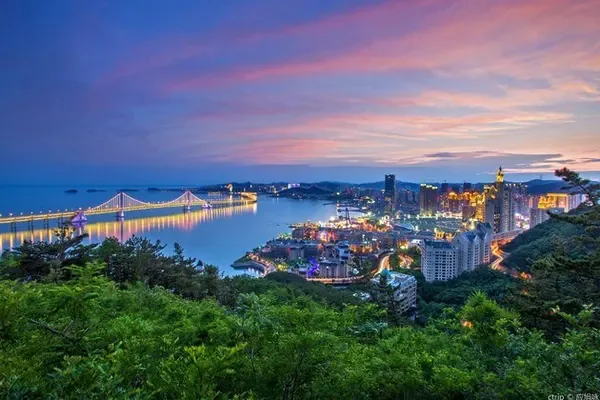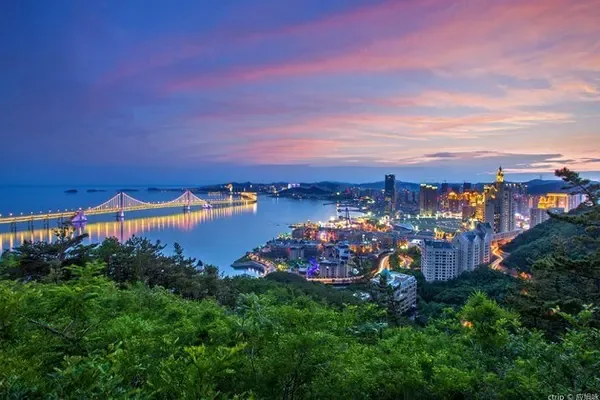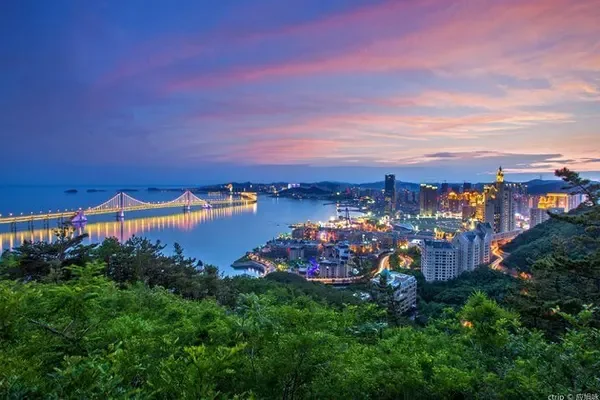How should I express my fascination with the Northwest?
The language of Mount Helan
The mountains in the northwest are resolute, vigorous and full of masculinity. The sun-baked and air-dried mountain rocks are cracked, and sparse grasses and trees are dotted on them. His appearance, either under the transparent blue sky, or in the billowing sand and dust, is so crisp and firm. As if at sunset, the silhouette of the mountain is inlaid with brilliant golden edges in the backlight, like a soldier returning from victory on the battlefield, even if he is tired, he still stands tall, which makes people feel at ease.


——I always imagine Dashan as a human being. The mountains in the south are covered by vegetation with long vines and short leaves, shrouded in clouds and mist so that you can't see the true face, not free and easy and straightforward. This is my subjective "prejudice", or maybe it's just because I grew up in the South, I'm a little tired of watching too much.
Passing Qilian and reaching the foot of Mount Helan, this step took nine years.

No matter the Turks of the Huns, the Yuezhi of the party Xiang, or us standing in front of the rock wall at this moment, they are all attracted and tolerated by Helan Mountain. So from the Spring and Autumn Period and the Warring States Period to Xixia, every group of tribes who lived here relied on the body of the mountain on which they depended to survive, and described all kinds of Helan Mountain in front of them.
From flying birds and animals, to body and human heads, to daily activities, these vivid rock paintings constitute the language code of Helan Mountain, which is still telling today thousands of years later.

The Yinchuan Hanmeilin Art Museum, which echoes the rock paintings of Helan Mountain, is an expression from today's people.
It is almost hard to believe that there is such a modern and fashionable art museum in the remote Northwest. It is modern and stylish, firstly because it is newly built and has advanced facilities; secondly because the whole architectural design is ingenious and majestic, as if it is integrated with Helan Mountain; and the most important point is that after the artist Han Meilin donated many works to Yinchuan, the city government decided to collect them. It was built in the rock painting site of Helan Mountain.
According to the current popular words, this is called "linkage", or the link between ancient and modern times. Wonderful.


The language of Mount Helan was also heard and seen by Han Meilin, who got countless inspirations from the rock paintings. When donating more than a thousand pieces of works in 2010, Han Meilin said: "21 years ago, I came to Helan Mountain for the first time. Facing so many ancient rock paintings, I suddenly felt that I had been away for half my life, and I didn't find a home for art until I was in my 50s."
Walking and stopping in the Han Meilin Art Museum, we were shocked by the ingenious transformation of light and shadow space, and also immersed in the creative beauty of Han Meilin's works. Such vivid vitality is in line with the rock paintings of Helan Mountain.


Yinchuan may be a pleasant surprise for art lovers. On the west bank of the Yellow River in the city, there is a Huaxia Hetu Yinchuan Art Town, the most eye-catching of which is the Yinchuan Museum of Contemporary Art.


Yinchuan Museum of Contemporary Art is located by the lake. The overall building simulates the shape of the folds of the Yellow River rocks, and the exhibits are also rich and high-quality.
The design of the art town is also amazing. The main building is lined up towards the lake, using red brick and rusty iron texture materials, with simple and straight lines. Opposite to the Yinchuan Museum of Contemporary Art, it looks like an industrial modern version of the traditional earthen house by the Yellow River.


After seeing the Han Meilin Art Museum and the Yinchuan Museum of Contemporary Art, we never expected that Yinchuan, which has a very low sense of existence, would have such high-quality art facilities and atmosphere.
Faraway Xixia
Going south from the rock painting site of Helan Mountain, you will pass countless vineyards. This plain at the eastern foot of Helan Mountain is dry and rainless, with plenty of sunshine and a large temperature difference between day and night. It is said that it has more suitable conditions for grape growth than Bordeaux, France.
Such a flat foundation and gravel soil also allowed the Xixia Royal Mausoleum to stand upright after many earthquakes.

Looking at the other side of the mountain, if you don't deliberately look for it, you won't be able to notice the weathered mounds. The northwest is too vast, so places that seem to be close at hand are often twice as far away. It's as if the road here is as straight as the poplar trees. You can clearly see the end, but you have to drive for a long time to reach the turning point.

When the car approached, the small black spots before were slightly larger and denser. Until we stopped in front of an imperial mausoleum, with awe, walked along the long Shinto path. Finally, a complete building group suddenly unfolded before the eyes.
The ruins and ruined pavilions are the city wall courtyard with a standardized layout; the huge mound is a mausoleum with the characteristics of Dangxiang, Han nationality and Buddhist architecture-only by imagining, it is difficult for me to think of the appearance of the loess building in front of me, but all of this The Xixia Museum on the other side of the mausoleum group got the answer.

After visiting the museum, I especially remembered the name Li Yuanhao (I don't know why). Since the leader of the Dangxiang clan established Xixia in 1038, this small regime has existed for nearly 200 years under the attack of the Liao Song Dynasty and many western countries.
The Xixia Dynasty at the foot of Helan Mountain disappeared, but the Dangxiang people began to blend into the vast world from the Hetao Plain, just like other ethnic groups living on the Ningxia Plain.
by the yellow river
Arriving in Zhongwei, southwest of Yinchuan, the landform begins to transition to the Loess Plateau, with looser soil and shallower vegetation on the mountains. To the south of the Yellow River are thousands of ravines, and to the north is a vast desert.
It was a sandstorm day, and we drove along the Yellow River all the way, attracted by the earth temple on the left mountain. As soon as I got out of the car door, I stepped on the dust. Hundreds of stone steps are built straight to the top of the mountain, without zigzag twists and turns. Looking from the bottom of the mountain, the majesty of the earth temple on the top of the mountain is even more evident.


In this way, I arrived at the Yellow River Suji in a slight sandstorm. Even the sunset I saw that day was blue and white. Everything in the world seemed to automatically turn into a black and white photo under the filter of sand and dust.


Yellow River Suji is a group of homestays built on the south bank of the Yellow River. On the opposite bank is the Shapotou Scenic Area, and in the distance is the vast Tengger Desert. It is not an exaggeration to say that it is the most popular homestay in China.
Dawan Village, where the homestay group is located, used to be a traditional ancient village by the Yellow River, but it was later dilapidated. The architectural style of most homestays in the Yellow River Suji was designed in the form of rammed earth in ancient villages. It is hard to find a house here all year round, and there are still "construction projects" on the periphery.



In addition to several homestays, Huanghe Suji also has cafes, bakeries, cultural and creative shops, tea rooms... I like the pasture in the innermost part of the village the most. This model has also been extended to Chongqing. The designer and builder of the Yellow River Suji set up a "Bagu Suji" in Dianjiang. Currently, only Feituiji is open.


I accidentally discovered that the river bend where the Yellow River Suji is located, there is a Glamping wild luxury camp closest to the Yellow River, and instantly felt that those homestays were overshadowed. Thinking about facing the sand dunes, sleeping by the Yellow River and watching the stars and the moon makes me feel excited. Although there was a sandstorm on the day I lived, this experience is still exciting.


Next to the camp, a trestle bridge leads to the river. On the top of the high mountain opposite is National Highway 338, and you can clearly see trains and cars passing by. At night, it was pitch black, except for the car lights flashing from time to time on the top of the flat mountain. That kind of feeling is so wonderful, I thought of using "the street market in the sky" to describe the picture.

At night, there is a barbecue with bonfires and singing in front of the camp. The night is as cool as water, and I especially experienced the huge temperature difference between day and night in the camp. In the early morning, you also have to do it yourself and make a Western-style breakfast. I left in a hurry, if I had another chance, I would choose to stay here for one more night.

308 Township Road North Long Beach Section
North Long Beach is a village west of Zhongwei City. The ancient village that cannot be seen in Dawan Village, where the Yellow River Suji is located, is still slowly growing in North Long Beach.

And along the country road from Zhongwei to North Long Beach, there are very special geological landscapes for southerners like me. Driving, sometimes close to the Yellow River, sometimes through barren and rocky valleys, sometimes into the endless Gobi... But my heart is more excited and more open. This is the appearance of the Northwest I love. .



Many people think that this section of the road is similar to the US Route 66, and there are many people who come to check in. Even Zhongwei City itself named this scenic spot called "Route 66". But it’s really enough. The Yellow River Suji is called “Chinese version of Morocco”, and Yili is called “Chinese Provence”. Even after the Three Gorges Reservoir was released, the river beaches exposed anywhere in the main city of Chongqing are called “Chongqing Maldives”... ...
Here is Zhongwei, 308 Township Road, a section of the vast mountains and rivers in Northwest China, unique.


When I got off the bus in North Changtan Village, I was surrounded by old ladies who kept approaching, selling local specialties such as jujubes. In other words, it cannot be called a native product, because it is too primitive, without industrialized packaging, and it is just the fruit grown in front of our own house. They talked a lot to persuade me to buy it, but they couldn't understand most of the content.
On the side of the Yellow River Highway, the old man was sitting in front of his house selling dates with his back to the sun. He was there when we passed by and was still there when we returned at noon.
Some can't bear to look at the deep wrinkles on the dark skin, baked by the scorching sun, the brown wrinkles of this land for generations.
desert day and night
After crossing the dividing line between Ningxia and Inner Mongolia in Zhongwei, it didn't take long to enter the Tengger Desert. Before that, the memory of the desert came from Mingsha Mountain and the Sahara. It has been a long time, and I have never been close to the desert. And at this moment, standing in her arms again, I feel that sunlight is also gentle:)


The morning is bright, the noon is hot, the evening is gentle, and the night is quiet. This is every side of the sand sea. If the heel hadn't been worn out, I would have spread my feet and stepped on the sand and ran wildly!

The lines of the sand dunes are like smooth strokes painted on the crystal blue sky, which can be seen for an hour without getting tired. At the moment of sunset, in order to find the most suitable sunset point, we climbed one sand dune after another, and we became points on a smooth line.


With so many stars, it is easy to see only in sparsely populated "underdeveloped" arid areas. I am secretly glad that yesterday's dust storm has passed before I can see the bright starry sky tonight.
The most serious time I watched the starry sky before was on the shore of the Red Sea. I stayed up all night with my friends. From the starry sky, I saw the moonlight covering the stars until the sun rose. A few years later, the mood is completely different. I probably won’t watch the starry sky all night again, and even this time in the Tengger Desert, I don’t have the motivation to get up early to watch the sunrise over the sand sea.


Naturally, the desert wasn't always so cute. When the weather is bad, she seems to be a completely different person; the tent pitched in the desert is blown by the wind all night; It's sand, and I began to wonder how many catties of sand I breathed in when I was sleeping...

But we can still use water here, and we can drink skewers. Compared with the endless golden yellow in front of my eyes, my lips are chapped and my skin is a little dry, so nothing :)

write at the end
Since the outbreak of the epidemic, it has been like a trial step by step, from the suburbs to neighboring provinces, and then to further places within the national border. Being "trapped" in the country, we turned our attention to the landscape of China. The strangers in the motherland are fortunate to have walked into the mountains and rivers of this land. It is thought to remember.



